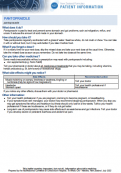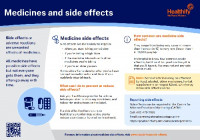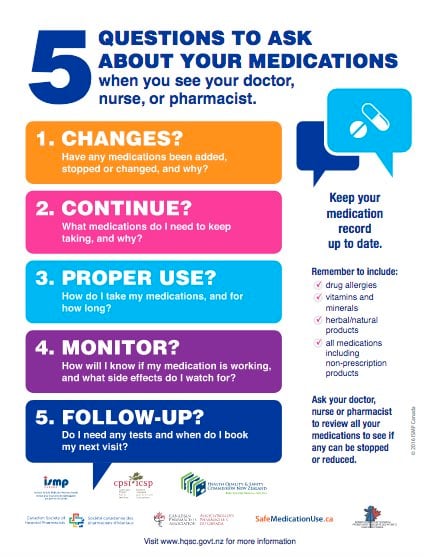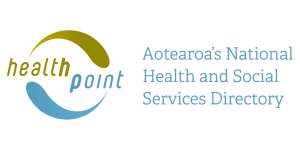Wishing everyone happy holidays and a joyful New Year from the Healthify team. Don't forget to Slip, Slop, Slap and Wrap!
Pantoprazole
Sounds like 'pan-top-ra-zole'
Key points about pantoprazole
- Pantoprazole is used to treat problems affecting the stomach and gut, such as indigestion, reflux and ulcers.
- It belongs to a group of medicines known as proton pump inhibitors.
- Pantoprazole is also called Panzop Relief®.
- Find out how to take it safely and possible side effects.

Pantoprazole reduces the amount of acid produced in your stomach. It belongs to a group of medicines known as proton pump inhibitors (PPIs).
- Pantoprazole is used to treat conditions associated with high levels of stomach acid such as indigestion, reflux and ulcers. It can prevent ulcers from forming, or help the healing process where damage has already occurred.
- Pantoprazole can be used to prevent ulcers caused by medicines such as non-steroidal anti-inflammatory drugs (NSAIDs). Examples of NSAIDs are diclofenac, ibuprofen and naproxen.
- It can be given together with certain antibiotics to get rid of Helicobacter pylori, a bacteria found in the stomach that can cause ulcers.
Dose
In New Zealand pantoprazole is available as tablets (20mg and 40 mg).
- Always take your pantoprazole exactly as your doctor has told you. The pharmacy label on your medicine will tell you how much to take, how often to take it, and any special instructions.
- The usual dose of pantoprazole is 20 to 40 mg once a day.
- Your doctor will advise you on how long to take pantoprazole for (usually for 2 to 4 weeks). Some people may need to take it for longer.
- It's best to take the lowest effective dose, for the shortest possible time.
How to take pantoprazole
- Take pantoprazole at the same time each day. You can take it with or without food, but it may work better if you take it before food.
- Swallow your tablet whole with a glass of water. Don't crush or chew the tablet or it won't work properly.
- If you forget to take your dose, take it as soon as you remember. But if it is nearly time for your next dose, just take the next dose at the right time. Don't take double the dose.
Here are some things to know when you're taking pantoprazole. Other things may be important as well, so ask your healthcare provider what you should know about.
Avoid long-term use of pantoprazole
If you don’t need it, pantoprazole shouldn't be taken long term because of the possible side effects. There may be a small increased risk of bone fractures, chest infection, gut infection and nutrient deficiencies such as low magnesium and vitamin B12.
If you’ve been taking a PPI for reflux for longer than 4 to 8 weeks, and your symptoms seem to be well managed, it’s a good idea to talk to your healthcare provider about reviewing your medicine. They may recommend reducing your treatment. This could include:
- Reducing your daily dose of pantoprazole.
- Taking pantoprazole only when you experience the symptoms of heartburn and reflux (also known as on-demand therapy).
- Stopping treatment completely, as your symptoms may not return. It may be best to reduce the dose over a few weeks before stopping.
Read more about PPIs for heartburn and reflux.(external link)
Taking other medicines
Pantoprazole may be affected by medicines or herbal supplements, so check with your doctor or pharmacist before starting any new medicines.
Having an endoscopy
Ask your doctor if you should stop taking pantoprazole a few weeks before your endoscopy. It may hide some of the problems that would usually be spotted during an endoscopy.
Rebound acid secretion when stopping
When pantoprazole is stopped, a common side effect is rebound acid secretion, where the acid secretion in your stomach increases significantly. This should return to normal within 2 weeks. Because the symptoms of rebound acid secretion are the same as those of reflux (such as indigestion, discomfort and pain in your upper stomach and chest, feeling sick and an acid taste in your mouth), it can form an ongoing loop where stopping pantoprazole treatment creates the need to start it again.
Rather than restarting pantoprazole, your doctor may advise you to use antacids such as Acidex, Mylanta or Gaviscon. These can be effective for treating rebound acid secretion so talk to your healthcare provider if you experience it.
If you’ve been taking pantoprazole long term, talk to your healthcare provider about whether they recommend you slowly reduce your dose before stopping.
Other side effects
Like all medicines, pantoprazole can cause side effects although not everyone gets them. If you're concerned about any symptoms you think might be related to your medicine, talk to your healthcare provider. The following information offers some guidance but doesn't include all possible side effects.
Common side effects
Tell your healthcare provider if these side effects bother you.
- Sore stomach or feeling sick (nausea). Try taking omeprazole with or after a meal or snack.
- Feeling bloated, gas in your abdomen (tummy), farting.
- Mild diarrhoea (runny poo) or constipation.
Tell your healthcare provider immediately or phone Healthline free on 0800 611 116 if these occur
- Signs of low magnesium, such as muscle cramps, weakness, tiredness, feeling irritable and tingling or numbness.
- Signs of low vitamin B12 such as feeling very tired, a sore and red tongue, mouth ulcers and pins and needles.
- Skin rashes with or without a fever and joint pain.
- Signs of an inflamed bowel such as severe or ongoing diarrhoea (loose, watery, frequent poo).
Phone 111 for an ambulance or go to your nearest accident and emergency (A&E) clinic if these occur
- Signs of an allergic reaction such as itchy skin, and rash, swollen lips or tongue, problems breathing, like a tight chest or shortness of breath.
Read more about medicines and side effects and reporting a reaction you think might be a side effect.
Pantoprazole New Zealand Formulary
5 questions to ask about your medications(external link) Health Quality and Safety Commission, NZ, 2019 English(external link), te reo Māori(external link)
References
- Pantoprazole(external link) NZ Formulary, NZ
- Pantoprazole(external link) NHS, UK
- Stopping proton pump inhibitors in older people(external link) BPAC, NZ 2019
- Proton pump inhibitors – when is enough, enough?(external link) BPAC, NZ, 2014
- Proton pump inhibitors and the risk of acute kidney injury(external link) BPAC, NZ, 2016
Brochures


Medicines and side effects
Healthify He Puna Waiora, NZ, 2024

Health Quality and Safety Commission, NZ, 2019 English, te reo Māori
Credits: Sandra Ponen, Pharmacist, Healthify He Puna Waiora. Healthify is brought to you by Health Navigator Charitable Trust.
Reviewed by: Angela Lambie, Pharmacist, Auckland
Last reviewed:
Page last updated:





